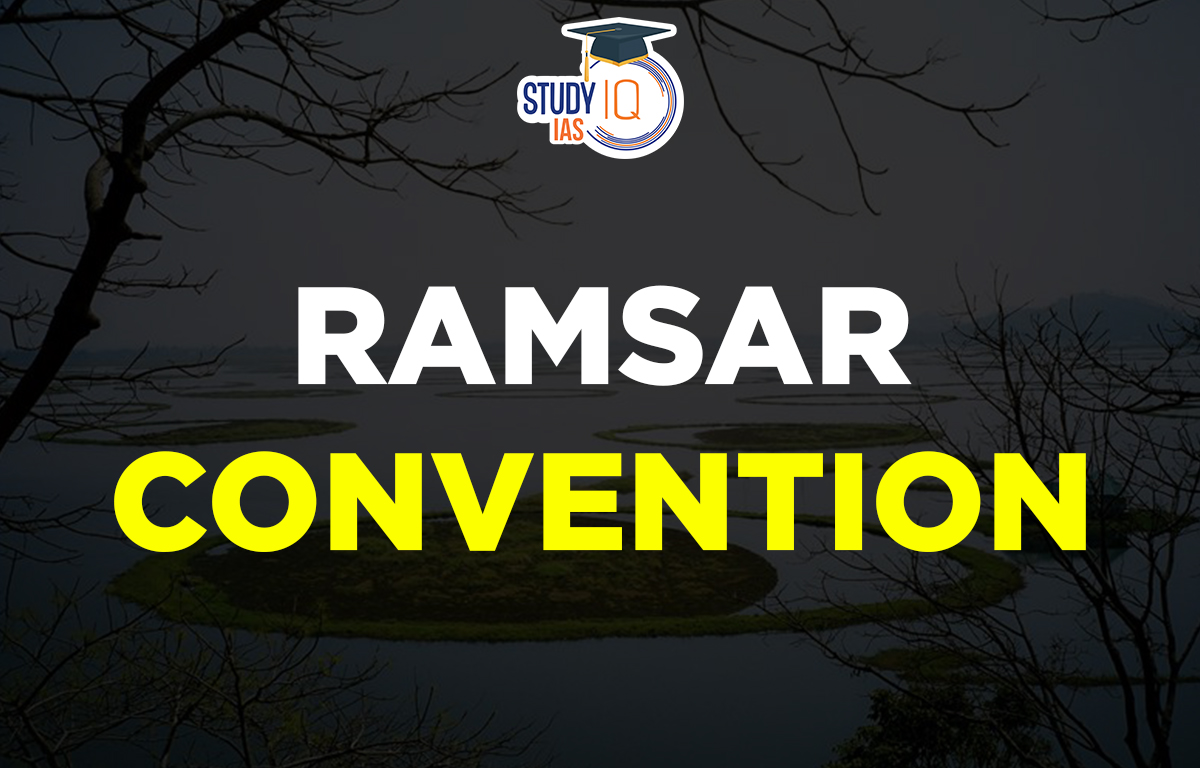Table of Contents
Ramsar Convention
The Ramsar Convention, also known as the Convention on Wetlands, is an international treaty for the conservation and sustainable use of wetlands. It was signed on February 2, 1971, in the Iranian city of Ramsar, hence its name. The Convention’s mission is to ensure the wise use of wetlands and their resources. It recognizes the ecological, economic, cultural, and recreational value of wetlands and their critical role in maintaining the earth’s biodiversity and ecosystem services.
As of 2021, the Ramsar Convention has 171 contracting parties, including 170 countries and the European Union, which have designated more than 2,400 wetland sites as Wetlands of International Importance, also known as Ramsar Sites. These sites cover over 252 million hectares worldwide.
By designating a wetland as a Ramsar Site, a country commits to protecting and conserving its ecological character and promoting sustainable use of its resources. The Convention also encourages international cooperation for wetland conservation and provides a framework for the wise use of wetlands globally.
Ramsar Convention on Wetlands Objectives
The Ramsar Convention on Wetlands has several objectives, which are:
| Objective | Description |
| Conservation of wetlands and their resources | The primary objective of the Convention is to promote the conservation and sustainable use of wetlands, recognizing their ecological, economic, cultural, and recreational value. |
| Wise use of wetlands | The Convention encourages the wise use of wetlands, which means the utilization of wetlands in a sustainable manner, compatible with the maintenance of their ecological character. |
| International cooperation | The Convention promotes international cooperation on wetland conservation and management, recognizing that the conservation of wetlands and their resources is a global concern that requires coordinated efforts. |
| Designation of Wetlands of International Importance | The Convention encourages countries to identify and designate wetlands of international importance, also known as Ramsar Sites, which represent the best examples of wetlands ecosystems of global significance. |
| Monitoring and reporting | The Convention requires regular monitoring and reporting on the status of wetlands and their resources, the measures taken for their conservation and sustainable use, and the effectiveness of these measures. |
| Public awareness and education | The Convention promotes public awareness and education on the importance of wetlands and their conservation, recognizing that public support and involvement are essential for the success of wetland conservation efforts. |
Criteria for Designating Ramsar Site
The Ramsar Convention provides criteria for the designation of wetlands as Wetlands of International Importance, also known as Ramsar Sites. The criteria are as follows:
- The wetland should contain species, populations, or communities of plants and animals that are unique, rare, or endangered, or support significant numbers of migratory species.
- The wetland should be an outstanding example of a natural or near-natural wetland ecosystem or represent an important stage in the ecological or biological evolution of a wetland ecosystem.
- The wetland should contain a complex of habitats that are dependent on the hydrological systems, such as rivers, lakes, estuaries, deltas, and floodplains.
- The wetland should contain cultural sites, archaeological sites, or traditional cultural practices that have significant historical, cultural, or spiritual values.
- The wetland should have recreational, scientific, educational, or cultural values that are of international significance.
Ramsar Convention Sites in India
India is a party to the Ramsar Convention on Wetlands and has designated 75 wetland sites as Ramsar Sites. These sites cover a total area of over 1.08 million hectares and include a variety of wetland types, such as lakes, rivers, estuaries, mangroves, and marshes.
Some of the notable Ramsar Sites in India include the Chilika Lake in Odisha, the Keoladeo National Park in Rajasthan, the Bhoj Wetland in Madhya Pradesh, and the Loktak Lake in Manipur. These wetlands are important for their ecological, cultural, and socio-economic values and support a range of flora and fauna, including many threatened and endangered species.
The Government of India has taken several measures to protect and conserve these wetlands, including the implementation of the National Wetland Conservation Programme, the creation of wetland management authorities, and the development of management plans for Ramsar Sites.
However, despite these efforts, many Ramsar Sites in India are facing various threats such as pollution, encroachment, over-exploitation of resources, and climate change. There is a need for sustained conservation efforts and increased public awareness and participation to ensure the long-term protection and sustainable use of these important wetland ecosystems.
Ramsar Convention UPSC
The Ramsar Convention is an important topic in the context of the UPSC exam. Aspirants should have a basic understanding of the Ramsar Convention on Wetlands and its objectives. It is an international treaty that provides a framework for the conservation and sustainable use of wetlands. India is a signatory to the Convention, and it has designated several wetlands as Ramsar sites. UPSC aspirants should be aware of the key points related to the Ramsar Convention.


 Nilgiri Biosphere Reserve, Map, Climate,...
Nilgiri Biosphere Reserve, Map, Climate,...
 Repo Rate and Reverse Repo Rate, Impact ...
Repo Rate and Reverse Repo Rate, Impact ...
 Foreign Contribution Regulation Act (FCR...
Foreign Contribution Regulation Act (FCR...





















